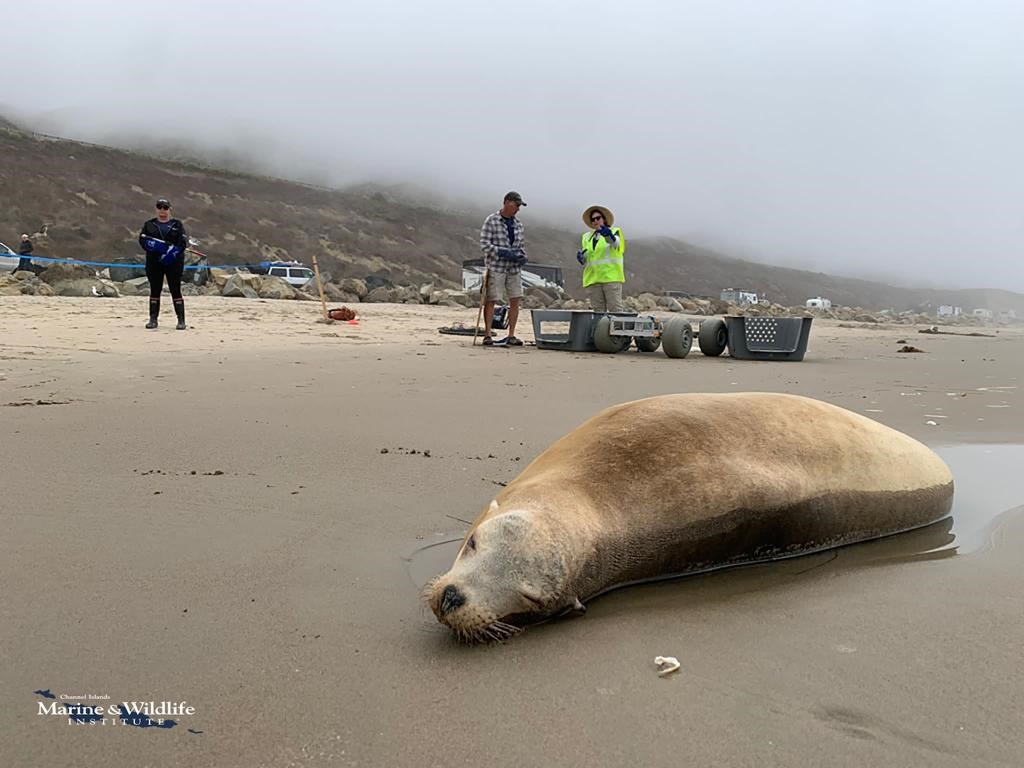NOAA’s National Centers for Coastal Ocean Science provided a harmful algal bloom (HAB) Event Response award of $4,520 to Scripps Institution of Oceanography, Southern California Coastal Ocean Observing System (SCCOOS), Southern California Coastal Water Research Project (SCCWRP), University of California – Santa Cruz, and The Marine Mammal Center. This award will fund their efforts to investigate the Pseudo-nitzschia bloom and co-occurrence of a marine mammal mortality event taking place off the coast of Southern California.

Pseudo-nitzschia blooms result in the production of the neurotoxin domoic acid. On August 15, 2022, increased reports of California sea lions with signs of domoic acid intoxication from the Channel Islands Marine Wildlife Institute began appearing on social media and within the broader California marine mammal stranding network. Initially, the domoic acid intoxication cases were located in the Ventura area, southeast of Santa Barbara. Later that week, the first domoic acid intoxication case was reported in Santa Barbara County. By August 30, more than 60 California sea lions had been rescued, and ten deceased animals, including sea lions, northern fur seals, and dolphins, were recovered from beaches. Most of the deceased animals were adult female California sea lions and at least one was a northern fur seal that required euthanasia after treatment. In September, another ten California sea lions were rescued by centers farther south in Los Angeles and Orange Counties, along with one deceased dolphin. The stranded sea lions exhibited symptoms of domoic acid intoxication, consistent with previous Pseudo-nitzschia bloom events.
The California Harmful Algae Risk Mapping (C-HARM) System, which uses satellite imagery and circulation modeling to produce spatially explicit domoic acid forecasts, has produced forecasts that align with the present event, first predicting a highly localized patch of domoic acid risk in the Ventura, CA area that eventually spread into the Santa Barbara Channel and has recently intensified in a narrow coastal swath from Orange County to the Mexico border. However, SCCOOS-funded pier monitoring via the Harmful Algal Bloom Monitoring and Alert Program (HABMAP), which collects weekly phytoplankton and water quality data at ten locations along the California coast, has not captured indications of a significant bloom event.
Given the mismatch in coastal phytoplankton monitoring and ecosystem impacts during this event (ie. cell concentrations were not detected by pier monitoring despite marine mammal strandings on beaches with signs of DA intoxication), this award will support the offshore sampling of domoic acid concentrations in areas not routinely monitored in the Santa Barbara Channel. This sampling will be conducted aboard the Santa Barbara Channelkeeper cruises-of-opportunity. It is critical to sample the bloom as quickly as possible to better understand cross-shore variability and the nearshore/offshore decoupling of domoic acid production.
In addition, this award will support the determination of acute impacts to marine wildlife by funding analysis of the active toxin – domoic acid in animal tissues – to assist in keeping track of marine mammal impacts throughout the bloom event. Scientists at SCCOOS and SCCWRP will work directly with regional partners, including the California marine mammal stranding network, and local communities to communicate results from this emergency response.
The NCCOS HAB Event Response Program provides immediate assistance to help federal, state, and local officials manage events and advance the understanding of HABs as they occur. For more information about the Event Response, contact marykate.rogener@noaa.gov.
